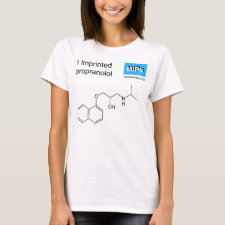
Authors: Bodhibukkana C, Srichana T, Kaewnopparat S, Tangthong N, Bouking P, Martin GP, Suedee R
Article Title: Composite membrane of bacterially-derived cellulose and molecularly imprinted polymer for use as a transdermal enantioselective controlled-release system of racemic propranolol.
Publication date: 2006
Journal: Journal of Controlled Release
Volume: 113
Issue: (1)
Page numbers: 43-56.
DOI: 10.1016/j.jconrel.2006.03.007
Alternative URL: http://www.sciencedirect.com/science/article/B6T3D-4JHMTGV-1/2/93aa03441ae03a3e203dfb604d906d40
Abstract: A composite membrane for transdermal delivery of S-propranolol enantiomer was developed based on the controlled pore functionalization of bacterial cellulose membranes using a molecularly imprinted polymer (MIP) layer synthesis. The reactive pore-filling of an asymmetric porous cellulose membrane with a MIP thin-layer was effected using a silanised coupler as an additional anchor for the MIP. MIP thin-layers with specific binding sites for S-propranolol were synthesized by copolymerisation of methacrylic acid with a cross-linker, ethylene glycol dimethacrylate in the presence of S-propranolol as the template molecule and the latter was subsequently extracted. Selective transport of S-propranolol through the MIP composite membrane was obtained, although this was determined mostly by the parent cellulose membrane with some ancillary contributory effect from the MIP layer. In addition, an enantioselectivity in the transport of propranolol prodrug enantiomers was found, suggesting that the shape and functional groups orientation, which are similar to that of the print molecule were essential for enantiomeric recognition of the MIP composite membrane. The enantioselectivity of S-MIP membranes was also shown when the release of propranolol enantiomers was studied in vitro using rat skin, with racemic propranolol contained in the donor compartment. The composite membrane of bacterially-derived cellulose and molecularly imprinted polymer may have great potential for use as a transdermal enantioselective controlled-release system for racemic propranolol
Template and target information: S-propanolol
Author keywords: molecularly imprinted polymer, Cellulose membrane, propranolol, Transdermal delivery, enantioselectivity



Join the Society for Molecular Imprinting

New items RSS feed
Sign-up for e-mail updates:
Choose between receiving an occasional newsletter or more frequent e-mail alerts.
Click here to go to the sign-up page.
Is your name elemental or peptidic? Enter your name and find out by clicking either of the buttons below!
Other products you may like:
 MIPdatabase
MIPdatabase









